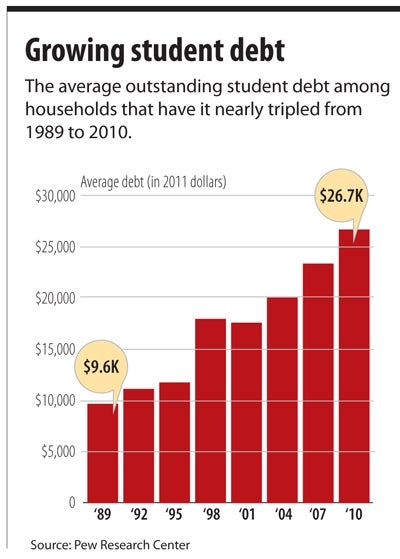Higher education enters a pivotal era

You'd be hard pressed to find someone in the United States – especially Massachusetts – who would quibble about the value of a college degree. According to the U.S. Bureau of Labor Statistics, the median weekly earnings in 2012 for someone with a bachelor's degree ($1,066) exceeded that of a person with only a high school diploma ($652) by more than 63 percent.
Not dissimilar to the health care industry, higher ed costs have risen exponentially over the last several decades. For example, in the 1980-81 academic year, according to the National Center for Education Statistics, the average cost of tuition, room and board for full-time undergraduates was $3,499, in current dollars. The average tab in 2010-2011? $22,092.
Yet, just as the health care industry is reining in costs following a long public outcry, many believe it's time for colleges and universities to take similar action. The mission: How can colleges and universities deliver a quality education and develop tomorrow's leaders, while holding the line on costs?
The question is especially important to small, private colleges, many of which don't have the financial resources (read: endowments) of larger private institutions and can't compete on costs with in-state public colleges and universities.
Last month, one of those small, private schools, Assumption College, took two steps to improve its competitive position: one bold, the other painful. First, it announced a four-year freeze on tuition for current and incoming freshmen in response to the cost pressures facing the parents of current and future college students. The pain came last week when the 15 college employees were laid off as part of a restructuring.
Meanwhile, Clark University announced it's taking a small step away from its largely “need blind” admissions policy in awarding financial aid and will examine the financial need of some students in decisions on aid.
The state's higher education institutions are also feeling the financial heat. Last week, State House News Service reported that Gov. Patrick's budget plan for fiscal year 2015 would make it difficult for the state's colleges and universities to deliver on a plan to freeze tuition and fees for two years. University of Massachusetts President Robert Caret wants the state to cover up to half of the schools' budgets, the news service said. Meanwhile, Caret said UMass will push $148 million of its own funds toward financial aid for students to help keep college affordable and make student debt manageable.
While many would say colleges and universities will someday have to make the kind of hard decisions many in the health care sector are making today, that “someday” has already arrived.
The actions by Clark and Assumption are examples of proactive leadership to address the issue of costs, even though the layoffs were not easy. Higher education — within and outside Central Massachusetts — must take a hard look at its business models and, like health care, make meaningful, fundamental changes to propel their institutions into the future. Higher education is a significant industry here, and the health and vitality of our colleges and universities are critical to our economy. With reforms, innovations, tough decisions and the right leadership, the region's schools can continue to turn out well-educated students who will graduate without the fear of having an overly burdensome financial noose around their necks.













0 Comments